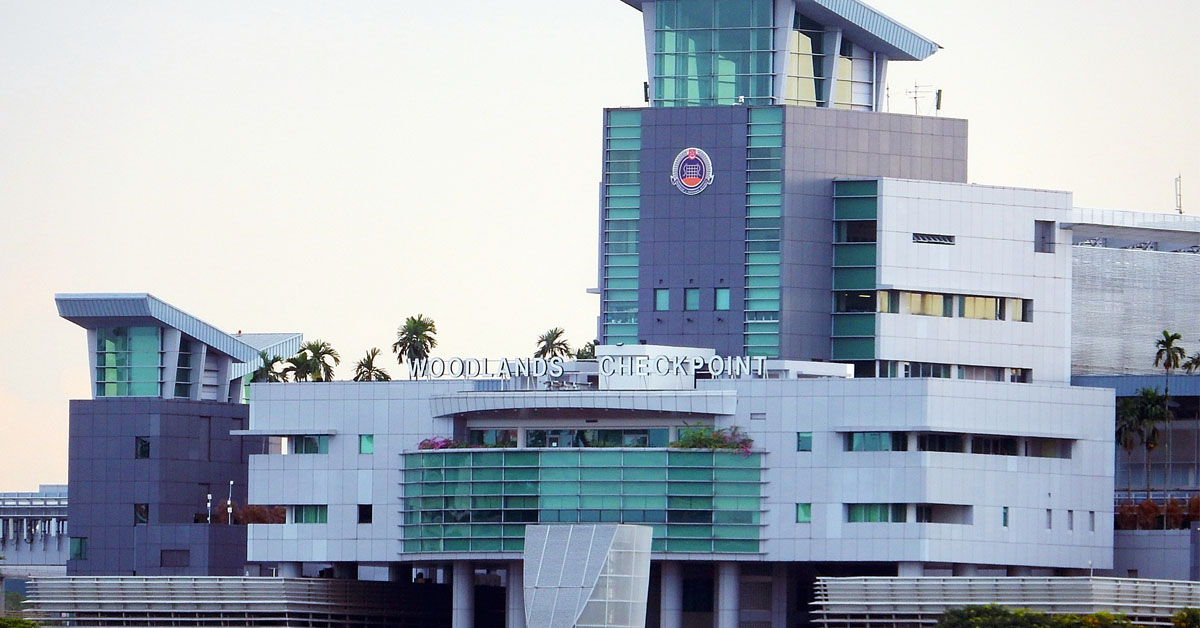With coronavirus becoming an endemic—an illness akin to a seasonal flu as its fatality falters in the presence of vaccine treatments—the Government can finally shift their focus back to the plans they have previously placed on the backburner.
Lately, it has been announcement after announcement of transport-oriented infrastructure projects— from the opening of the Round Island Route, a 150-kilometre park connector, the construction of Changi Airport Terminal 5, to the launch of the Johor-Singapore Rapid Transport System, which will link Woodlands North station to Malaysia’s Bukit Chagar station.
On Thursday (26 May), the Immigration and Checkpoints Authority (ICA) announced that it will be expanding the Woodlands Checkpoint to accommodate the projected increase in traffic and help with congestion.
The Affected Area
As such, the Housing Development Board (HDB) will be re-acquiring Blocks 210 to 218 at Marsiling Crescent/Lane for the huge redevelopment and expansion.
According to HDB, this will cover 732 sold flats, 53 rental flats, one rental kiosk, six rental shops, and one rental eating house.
In 2017, ICA originally stated that the land checkpoint would be enlarged and take over the Old Woodlands Town Centre.
It’s evident that the ICA has decided to expand it even further, after noting that the traffic volume at Woodlands has returned to more than 90% of pre-pandemic levels during the weekends.
It’s a remarkable recovery, considering how the land borders were only fully re-opened on 1 April.
The Impetus for Expansion
According to ICA’s projections, the traffic volume is expected to return to the daily average of 300,000 soon, and it will continue to increase.
If no actions are taken to start expanding the immigration checkpoint at Woodlands while the travelling volume continues to soar, the travel time by vehicle will increase by 60 to 70% by 2050.
If that ever comes to pass, travellers would be stuck on the same stretch of road for a big part of their journey, and some people might just end up throwing their hands, stepping out of the car, and jog towards the custom.
The main objective of the expansion, like the introduction of the Rapid Transport System, is to shorten the clearance time to 15 minutes from the usual hour it takes during pre-pandemic conditions.
With what a massive undertaking the expansion and upgrades to the Woodlands Checkpoint will be, it will take up to 10 to 15 years to complete the project.
Arrangement for the Affected Residents
Naturally, the affected residents won’t be left to fend for themselves.
HDB asserted that the flat owners at Block 212 to 218 will be offered the same benefit as those under the Selective En bloc Redevelopment Scheme (Sers).
This includes being given suitable compensation based on the flat’s current market value, and getting the opportunity to move into a new flat with a 99-year lease.
Residents are expected to move out by the second quarter of 2028.
In the event that residents wish to stay in the same area, they can look forward to 1,100 replacement flats that will be built on Woodlands Street 13.
Construction for this project will begin in the third quarter of 2024 and finish by the fourth quarter of 2027.
Perfectly timed to give prospective occupants a chance to bid, renovate, and move in before the deadline is up.
HDB announced that this new neighbourhood will be 23 to 24-storeys high, with 2-room flexi, 3-room, 4-room, and 5-room flats available.
Furthermore, there will be a range of recreational and communal facilities, like a children’s playground, fitness corners, pavilions, and a childcare centre.
These new buildings will be located 2km away from Marsiling Crescent, and it is just a 10-minute walk away from Marsiling MRT station.
Improvements to Clearance
Apart from its main goal of alleviating congestion, the ICA is looking to improve its pre-existing technologies to significantly reduce travel time by adding more automated and flexi-lanes that can be toggled to either clear cars or motorcycles.
They aim to cut down travelling time by four times at least.
This improvement will also allow vehicle checks to be conducted in an area separate from the main parts of the checkpoint, as another measure to bolster the security.
Featured Image: Shutterstock / Amnat Phuthamrong



